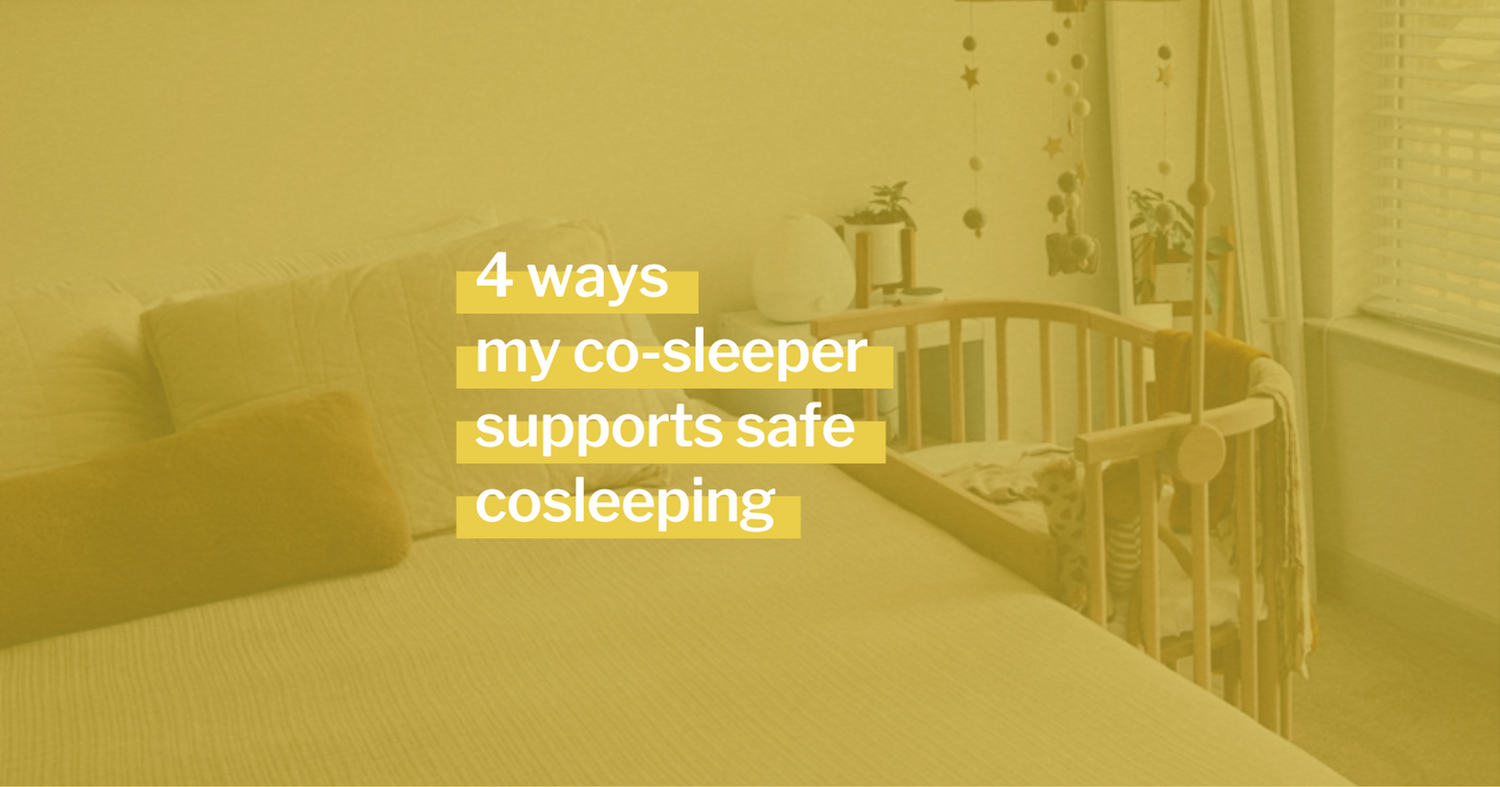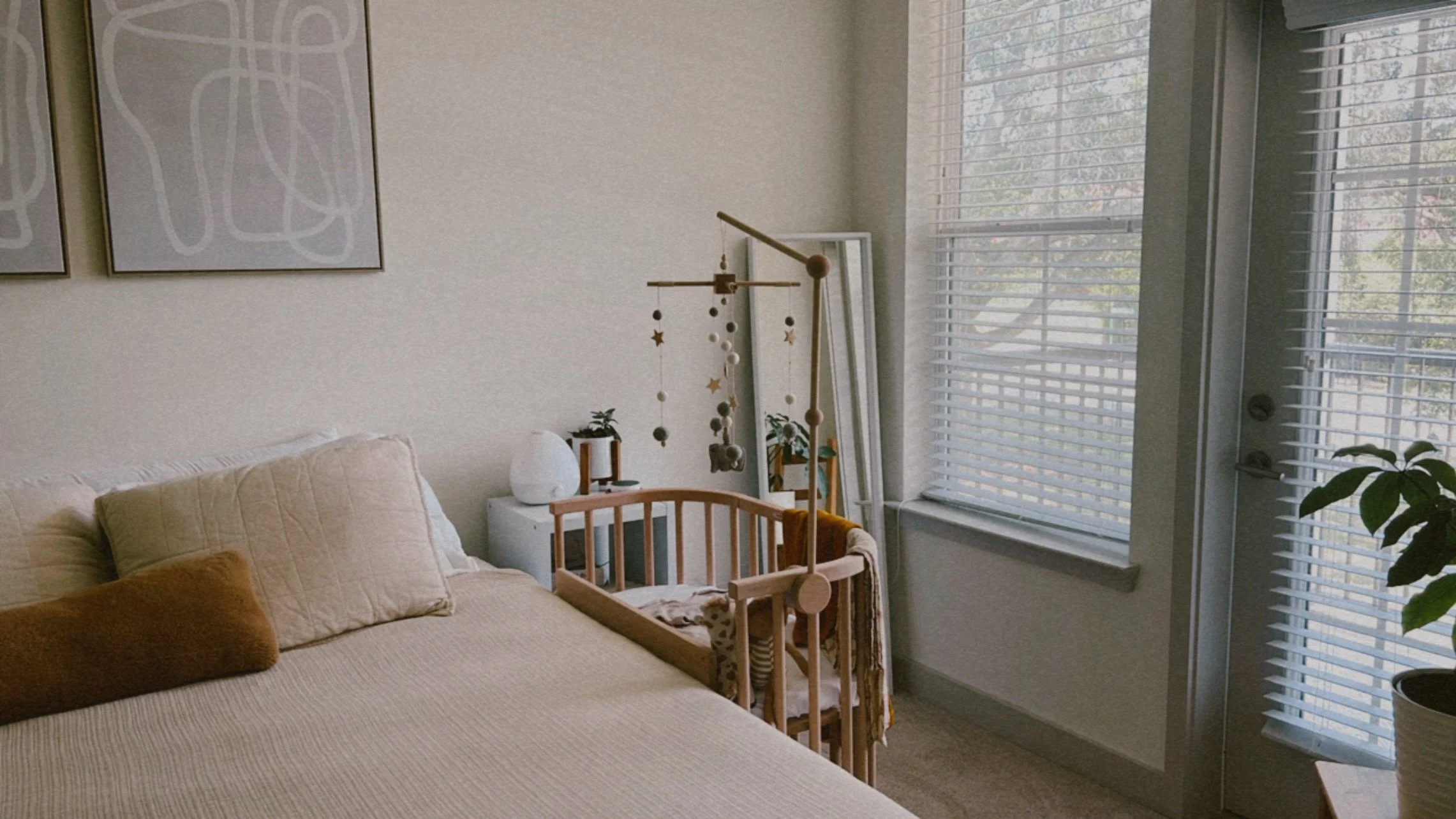4 Ways My Co-Sleeper Supports Safe Cosleeping
Cosleeping. Bedsharing. The minute you become pregnant, these become such controversial terms. But did you know that studies show that 60-75% of bodyfeeding / breastfeeding parents bedshare — EVEN when they don’t plan to?
How can that be? I’ve heard a lot of birth professionals discuss this, and read many articles, and what it comes down to is… parental exhaustion, and newborn biology. The early weeks and months with a newborn are known for sleeplessness, as babies require feeding as often as every two hours for a period of time, as well as diaper changes, comforting, and care to fall back to sleep. As a newborn parent on that sleep schedule, it’s just common that we fall asleep with babies near us from time to time, even when we don’t plan to. As for newborns, studies find that babies respond positively during sleep to the smell, movements and touch of their parent — that being close during sleep reduces the amount of crying, while having a positive impact on breathing, body temperature, absorption of calories, stress hormone levels, immunity, and oxygenation. One article said simply, it just seems to make babies happier.
I saw this data play out anecdotally the other day, in a Facebook group for moms — someone asked how people get their babies to sleep on their own and while some folks hopped in with suggestions along those lines, more than half responded — “I don’t, even though I planned to / wanted to, too!” What was the reason according to those parents? Because bedsharing/cosleeping just worked better. It was the most effective way to get quality sleep for them + for baby.
The really good news is that cosleeping doesn’t have to be so scary. If you fit with and follow the Safe Sleep Seven criteria, the risk of SIDS is what one sleep researcher calls “vanishingly small.”
What’s the Safe Sleep Seven?
You are:
1. A nonsmoker
2. Sober and unimpaired
3. Bodyfeeding / Breastfeeding
Baby is:
4. Healthy and full-term
5. On his/her back
6. Lightly dressed
And you both are:
7. On a safe surface
What makes a sleep surface safe?
When talking about safe surfaces for babies, we’re mostly talking about reducing the risks of smothering/breathing hazards.
Babies don’t have enough control over their bodies in the early months to get themselves out of unsafe sleep situations, so we have to prepare their sleeping environments and prevent potential dangers ahead of time.
I chose the Babybay Cosleeper* as my baby’s safe sleep surface — here are 4 ways that it creates a safe sleep environment:
1. It is a firm, flat surface
(unlike sofas, recliners, armchairs, etc.)
2. A low board separates its mattress from my bed’s mattress
(so baby can’t get stuck between the mattresses, but I can still easily reach and lift baby to me)
3. It is an appropriate height
(so that no pets/other children can interfere with the baby during sleep)
4. Once baby arrives, the space will be free of bumpers, pillows, toys, blankets, etc.
(so that there’s nothing for baby to roll over onto that could pose a smothering risk)
As a BONUS, I also love that these cosleepers are made with all-natural solid wood — no toxic wood glues, cheap fillers, plastics, or other harmful chemicals.
Hello peace of mind!
*I am delighted to be affiliated with Babybay USA.
Use discount code: CHEYENNE10 for 10% off any Babybay products!
Citations + Resources:
https://cosleeping.nd.edu/safe-co-sleeping-guidelines/
https://www.llli.org/the-safe-sleep-seven/
https://neuroanthropology.net/2008/12/21/cosleeping-and-biological-imperatives-why-human-babies-do-not-and-should-not-sleep-alone/


